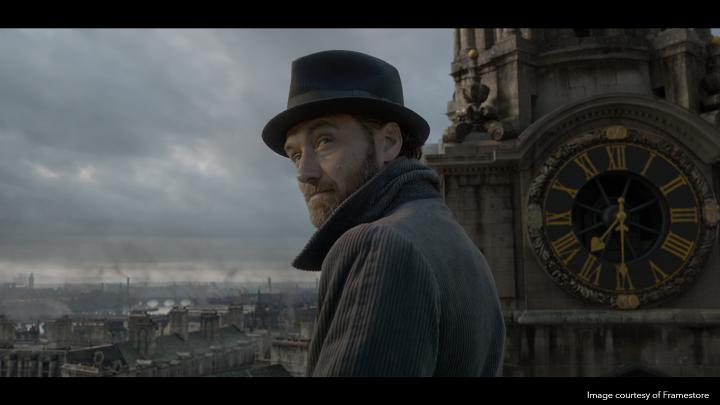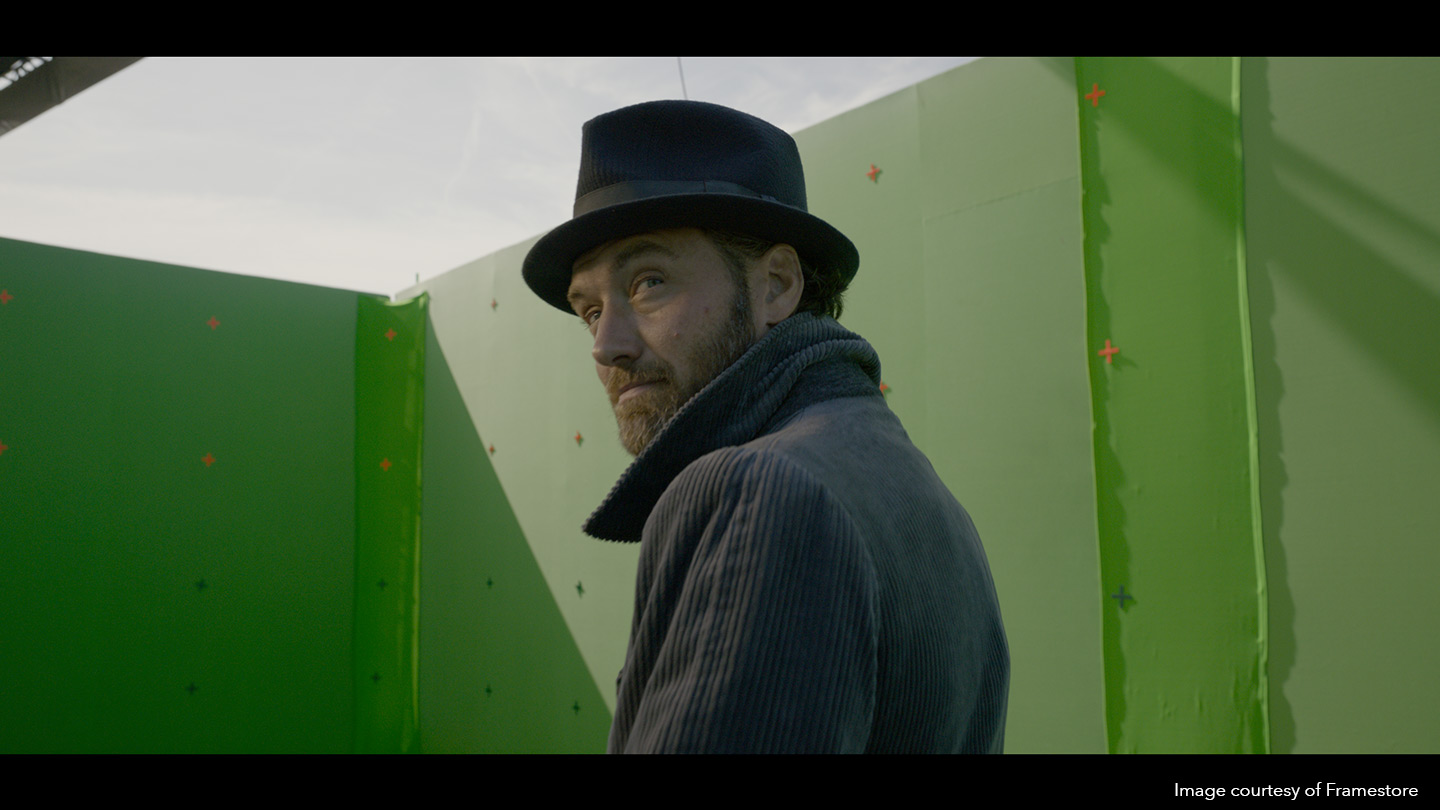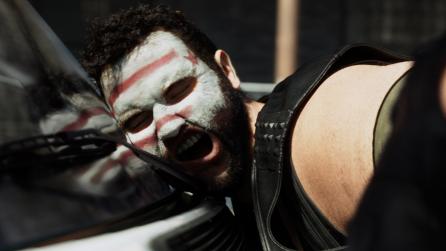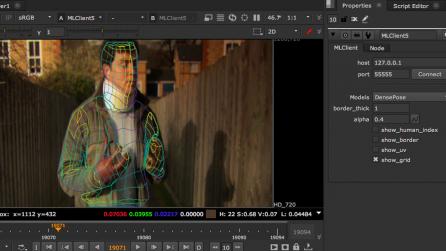Unleashing your full potential as a texture artist
by Michael Borhi, Head of Texturing at Framestore
It has been fascinating to witness the evolution of texturing in the visual effects business. What started out as 2D painting and photo collage has now transformed into something much more sophisticated, powerful and physically accurate. Gone are the days of using internet jpegs in Photoshop on a one 8K UDIM layout, wasting away hours fixing UV seams, and working out detail placement with a combination of guesswork and non-stop rendering.
Now, we have more texturing tools at our disposal than ever before, allowing us to work faster and cover bigger volumes of asset work, all while maintaining a great level of quality. It is easy to visualize maps on a model in 3D with basic shading, before rendering anything—which wasn’t always the case. Our energies are focused more effectively in the goal of texturing production assets.

Technological advancements in texturing
As an industry, we have always been very good at imagining and conceiving the kinds of technologies that would further strengthen the texture artist in their role. If you ask a texture artist about what tool sets or features they would love to see created or added to their favorite software, it is almost certain that most artists would have a detailed request list ready to go at a moment's notice. In this regard, artists are quite confident, when it comes to knowing exactly what is needed to improve their texturing methodology.
However, these advancements and innovations have come with an interesting trend, one that is not obvious at first glance. Assets gets textured, they look cool, schedules are adhered to and overall, the level of quality has risen steadily over the years. On the surface of things, we see progress. However, one phenomenon I see increasingly is more emphasis being placed on speed, technique and methodology rather than the artistry in texturing.
The ability to look at the quality of the result on its own merits, separate from the methodology, is being lost.

The overdependence on methodology
With the arrival of all of these innovations and tools, like procedural texturing, node graph recipes, and a wealth of tutorials on techniques like how to incorporate occlusion and cavity maps into a texture map, there is a real danger of putting too much focus on the methodology, and not enough on developing a sense of artistry that goes beyond technique. The technology that was supposed to have given artists more time and freedom to further improve the quality of their work, becomes the main focus of discussion instead.
Often I'll hear discussions about how the methodology gets texture maps quickly to a good result, with the bespoke or custom texturing part of the work being referred to as 'extra' or 'final touches'.
In my view, a procedural base brings me to the best part of texturing: the opportunity to sculpt and customize texture details into something more interesting. We look at textures that have been done with great efficiency using procedural setups, they look good, but do they look amazing? T
Procedural texturing is extremely powerful, and many artists are skilled at combining and mixing procedural textures together to produce fascinating results in good time. While it facilitates a part of the texturing job, it is one of many tools, and is not an end in itself. There is always an aspect of the workflow, that despite even the best methods, still manages to look...procedural, or formulaic.
Getting caught up in the methodology can sometimes give less experienced artists a false impression of what's involved in texturing. Missing the various stages of properly building up nuanced, great looking details that are integral to the discipline. As a result, bad habits can form early on in an artist's career if they are not given enough guidance, which can hinder them, as they are unaware that they can go even further artistically.
I often come across reels of junior artists, that lean heavily towards showing tileable maps or screenshots of workflows. While it can be useful to see, but it’s almost like showing a paint brush, or a tool used to create your work. What I’m predominantly looking out for is their most fully realized texture work, on a character/vehicle/environment. This shows not only their sense of artistry, but how well they can work details and maps across specific surfaces.

Striving for artistic perfection
Now that we have the technology and the methodology, the questions that keep running through my mind are–what defines a fully realized and accomplished piece of texture work? How do you get an artist to 'see' or strive for quality? How do you get artists to master the refinement stages of texturing?
Most artists have little difficulty in quickly establishing a base coverage of textures for an asset. What comes after that is often very revealing. It is interesting to see how differently artists respond when you tell them that what they have done looks good, now please refine it, take it further. You can place a textured model in front of two artists, one will instantly know how to refine it and improve upon the textures, taking it to an even better level. The other will think it is adequate as is, or will have difficulty in knowing how to make it better.
Is it experience, or a traditional arts background that makes the difference? Or is it more complicated than that? Each artist has their own personal standard of what is artistically good, based on taste, preference, experience, education, all of which can further compound the issue.
Two artists can talk about needing to improve the textures on an asset, yet the discussion can easily hide the fact that they hold very different sensibilities regarding what those improvements would look like. And this is not necessarily to do with a particular design element or conceptual idea, but in simply making the best quality textures possible.
It is always difficult to teach an artist precisely how to work through the refinement phase of their texture work, if they don't see it. Refinement can often be more of an abstract concept, which comes down to how each individual artist perceives what refinement means. There is no sure fire tutorial or roadmap for that. It isn't straightforward. But this is often what makes the difference between texture work which is good versus work which is great.


Exceeding expectations
An even more valuable is an artist’s ability to refine their texture work independently, without breaking away from the brief, and taking on board any notes from a supervisor or client. This often results in work that surpasses everyone's expectations.
What complicates this even further for artists is the production context. Artists have a lot to deal with when texturing assets. Not only do they have to produce iterations quickly, but models, and designs change, which forces artists to focus on fast and non-destructive methods. Large volumes of assets can't be uniquely hand painted, so this again obliges artists to focus more on the methodology.
Productions are increasingly unpredictable, schedules are tighter, which forces artists to be more strategic and practical in their approach, anticipating that unpredictability. It is in these situations where quality can potentially become secondary. Sometimes the brief only demands for what is merely 'good enough', because a character or a building is seen quickly in the distance. Sometimes artists don't even get the chance to properly refine their texture work in production due to time limitations.
The brief itself can sometimes be the artist's enemy, prioritizing functionality over quality. If you have an artist repeatedly working on assets of this nature, it is difficult for them to develop their refinement and artistic skills.
Over time they will get comfortable with hitting a certain level of quality, which is merely adequate and “stop there,” as anything further is not required. Working on multiple assets that have the same look will require a group of artists to work in the same way as one other. This is extremely beneficial for consistency in production, but can make the results look generic or formulaic if not approached correctly.
With the wealth of tools that we have at our disposal, determining the ideal texture workflow can sometimes be overwhelming. Some workflows lend themselves better to certain asset types. Hard surface assets aren't necessarily approached in the same way as organic assets, for example. One-off assets can be handled in a more loose manner compared to volume work.
What I often see is a hybrid approach, with artists utilizing features from various painting applications to get what they need. Sometimes texture details will commence with a flat constant color as the base, other times we'll use tileable maps or project with photos or often a mixture of all of the above. Even with all of these considerations, at Framestore, the large majority of our asset work is done in Mari. Artists also use Substance Designer & Painter, Mudbox, zBrush, Nuke and Photoshop, in addition to proprietary tools for baking utility maps and rendering.
However, the overall consensus among artists is that Mari strikes the right balance between methodology and artistry when doing intensive texture work. With Mari, it is quite easy to work on a very structured node graph or layer stack set up to establish the foundation for your texture work. And then in the next moment switch over to artist mode, adding bespoke details and custom paint work.
Mari has that dexterity which enables an artist to manage both the more technical, as well as the artistic aspects of any texture task. Though a significant part of the end result really comes down to the artist, how they apply themselves, and the level of creativity that they bring to any texture work.

Going back to the basics
There are many ways a texture artist can strengthen and fine tune the aesthetic, artistic quality of their work. First, the most obvious ones: draw on paper, paint on canvas, step away from the computer. Traditional art definitely informs the digital, and you can usually see differences in the quality of texture work of an artist who has traditional arts skills, versus one who does not. Working in a traditional art form also forces you to pay more attention to details, colors, scale and proportion, with none of the shortcuts or tricks of a software.
When I was younger, I started off by copying photos or images that I liked, trying to get my drawing or painting as realistic and as close to the photo as possible. This is an incredible exercise that will almost certainly help sharpen your observation skills, and make you truly aware of what's involved when trying to capture the richness and nuance of a face or anything found in nature.
When you start with a blank piece of paper or canvas, nothing comes for free. You're forced to look at every aspect of a surface in order to replicate it successfully. It might not be the most creative exercise, but guaranteed you will learn how far you need to push something in order to make it look as good as the real thing.
We often tend to look toward work done within our own industry when talking about visual effects, looking for ideas or trying to establish a standard of quality for the work we do. It's normal to compare notes with what's being done out there in visual effects, but this can lead to an insular mindset, with visual effects work informing other visual effects work. I'm not always certain that this is the best way forward. Influences and ideas need to come from outside sources as well if you want to have results which are rich, nuanced & unique. Study and observe art forms outside of the world of digital imagery.

Mastering a critical eye
In a more practical sense, doing paint overs on rendered images throughout the course of an asset build can be a huge indicator of what can be visually refined. The immediacy of working in 2D before going back through texturing can quickly reveal ways of seeing how texture work can be taken to that next level. By working this way, you tend to leave the methodology on the side for a moment and focus on the aesthetic quality.
We do a lot of this in production, it being an effective way for artists, supervisors and clients to find common ground when talking about the visuals. Referring to real life references and photos as much as possible, even when working on imaginary characters or environments is also essential. Training under a mentor or a more accomplished artist is always a great way for artists to develop their skills and the quality of their work.
It's difficult to say exactly how an artist can be taught to make something look better. There is so much at play there, and it's not merely about fixing a UV seam or changing the saturation of a color, or simply adding more detail.
In the end, much of it comes down it artist initiative and how aware or observant they are of details and colors, and how these work along surfaces. Honing a critical eye is paramount, refining the ability to honestly assess one’s own work, ask questions and find ways of making it shine–the learning process never ends. The worst enemy of any artist is complacency, it’s essential to remain passionate, curious and interested.

